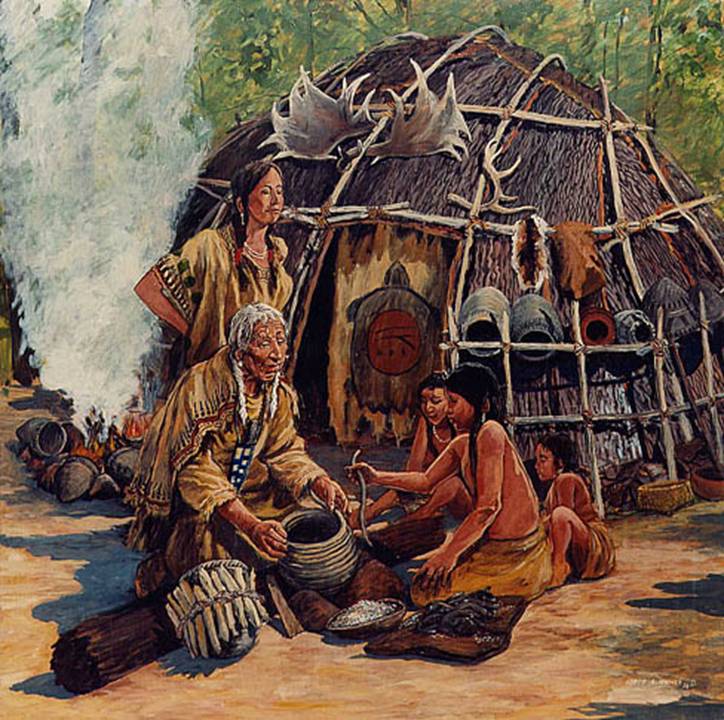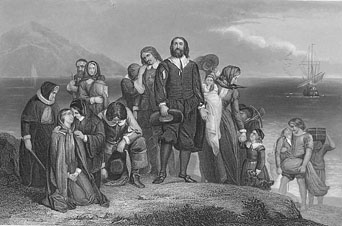Native Americans Before the Settlers, or Pilgrims, came to the United States, the area was populated by various Native American tribes. The area surrounding the site of the first Thanksgiving used to be the home of the Wampanoag people for more than 12,000 years. Today, this area is commonly known as southeastern Massachusetts and eastern Rhode Island. Before the arrival of the Mayflower, this area had been visited by many other European Settlers on their way to the New World. The Wampanoag people knew this land well. They had hunted, fished, and harvested their crops here for thousands of generations. |
 ancientlights.org |
The Settlers The Settlers, or Pilgrims, were a group of English Protestants that wanted to break away from the Church of England. These people made up the Plymouth Colony in the New World. The settlers received funding from several English merchants to sail across the Atlantic Ocean in order to make their new homes in the New World. A ship known as the Mayflower, carried 101 men, women, and children across the Atlantic Ocean. They planned to settle in the area where New York City is now located. However, due to poor weather conditions, they had to settle at what is currently known as Cape Cod, Massachusetts. |
 www.orsonprattbrown.com |
Settling and Exploring Winter in the New World was very difficult for the Settlers. It was very cold and snowy for many months. They were not used to such harsh conditions. In order to prepare for winter, they gathered as many supplies as they could find, including Wampanoag supplies. One day, two leaders from the Wampanoag tribe visited the Settlers. Their names were Squanto and Samoset. Squanto had experience with other Settlers who had visited the area, so he spoke English. Squanto taught the Settlers how to grow corn to eat and how to use fish to fertilize their fields. This helped the Settlers to gather enough supplies to survive the winter in the New World. After a few meetings, the Settlers and the Native Americans made a formal agreement. They worked together to protect each other from other Native American tribes in the area. |
 en.wikipedia.org |
The Celebration (The First Thanksgiving) In the fall of 1621, a group of Settlers and Native Americans were sent out to hunt deer for a celebration harvest. That year, the Settlers had a plentiful harvest due to Squanto and Samoset who had taught them about the land. After the hunting group returned with the meat, the English and native men, women, and children feasted together for three days! The meal consisted of deer, corn, shellfish, and roasted meats (this is not the traditional meal that we have today). The Settlers and and Native Americans also played ball games, sang, and danced as part of the celebration. Thanks and prayers were offered during the meal. The Settlers thanked God for all that they were grateful for. |
 people.ucls.uchicago.edu |
Modern Thanksgiving Modern-day Thanksgiving did not begin to take shape until the 19th century (the 1800's). In 1846, a passage about the Thanksgiving celebration in 1621 was discovered by a woman named Sarah Josepha Hale. She began campaigning for a national holiday in order to honor the Settlers and their harvest celebration. It wasn't until 1863, when President Abraham Lincoln declared two national Thanksgivings; one in August to remember the Battle of Gettysburg (during the Civil War) and the other in November to give thanks for our blessings and honor the Settlers and their harvest celebration. |
 handsonblog.org |
| Home |
Vocabulary |
Today's Traditions |
Quiz |
Objectives |